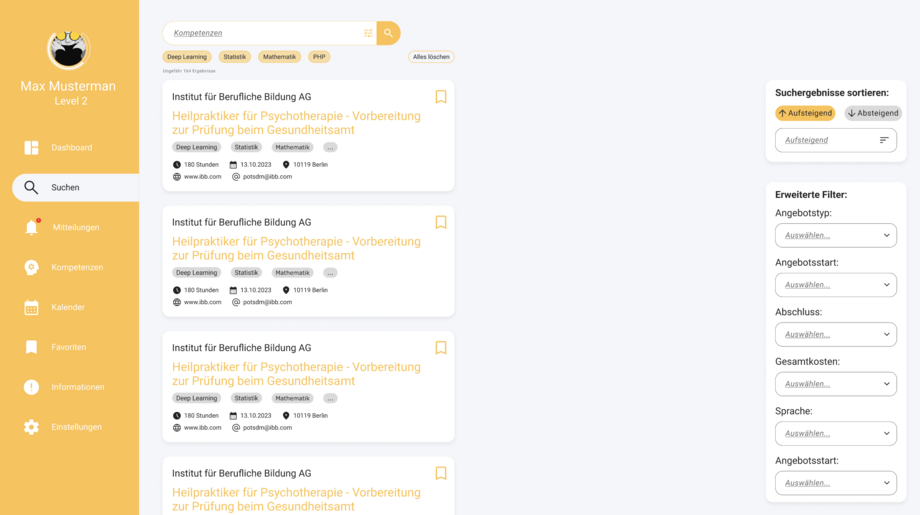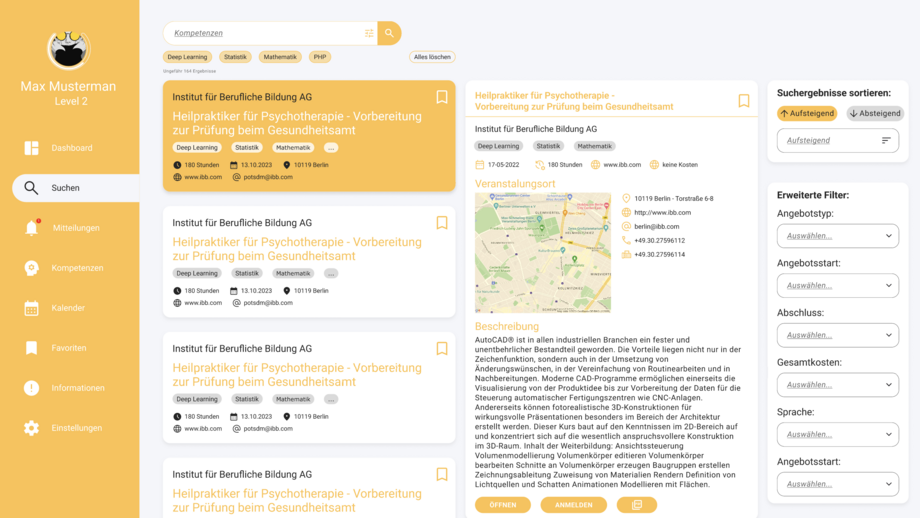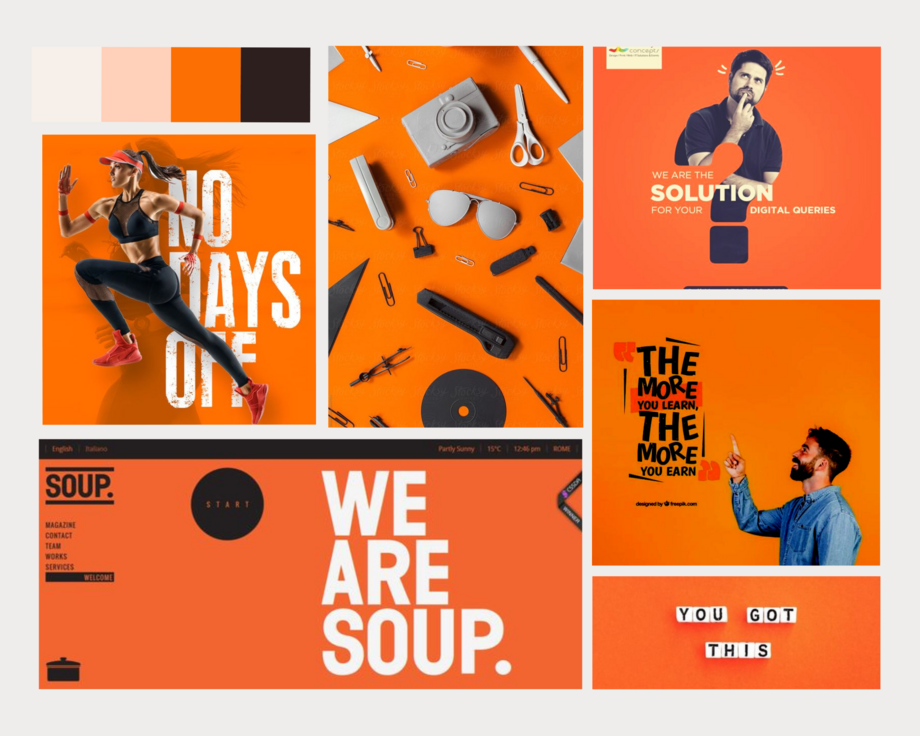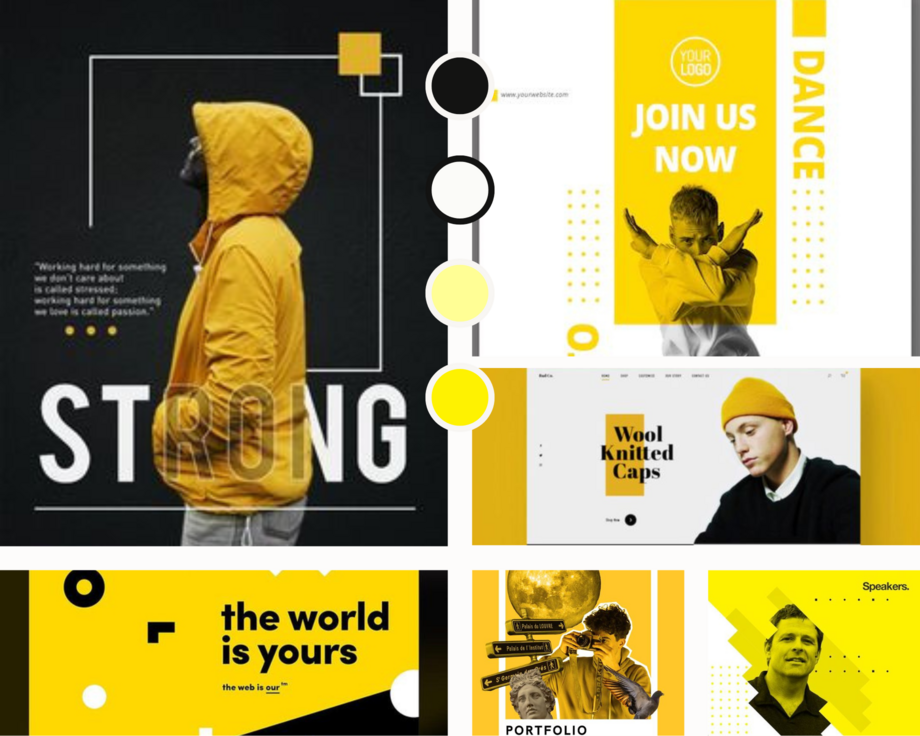
EXPAND+ER WB³ Showcase Development Field II: Usability & Personalization
Requirements for better usability of the database
In development area II, enhancements to the current platform will be tested. This addresses more extensive personalization (through learning recommendations, individual learning paths, and personal dashboards) and intuitive usability, so that those interested in education are empowered to pursue their individual educational path more actively than before. In 2022, after three requirements workshops with project members and associated partners, in particular the Staff Members of the WDB, a comprehensive and detailed requirements documentation with priority levels of the individual requirements for the search platform was created. From a functional point of view, the embedding of the Common Learning Middleware, the semantic search with recommender system and the forwarding to booking portals of the education providers are in the foreground. From a didactic point of view, the redevelopment of the frontend with gamification approaches, social learning and other features should bind people interested in education to the platform and lifelong learning. In August 2022, the EXPAND+ER WB³ extension for the search portal, based on DEfTIS-PAS 1045, the WDB extension and new elements have been created through the collaboration of the education service providers of the project consortium. Initial drafts for the front end of the search portal were created in late 2022.
Possible starting points
Didactic considerations dealt with the question of how to make continuing education courses interesting. In this context, it is important to consider how interested parties can see a continuing education platform as a puzzle piece in their lifelong learning and not as a one-time tool that they need just because they need to specifically search for a continuing education course. Three possible technological starting points, which take up considerations from the area of Gamification, were formulated in rough outlines. The focus is on the users and their experiences with the platform:
1. users have a profile page where their competencies are visualized with ratings and avatars that they can show to others. The page serves to externalize a sense of ownership.
2. competence pages should show with progress bars how a competence develops over time to create a concrete motivation for further activities.
3. users are given a daily task that is time-limited and can only be completed after a certain amount of time. The task is the same for all users. For the successful completion of the daily task, the users see their progress
UX design
Developing an effective and targeted UX design is a complex and in-depth process. Defining personas that are identified as potential users is as much a part of it as having clear processes for using the application. The development of mood boards and concrete usage scenarios are also essential for the conception of the UX design. While the mood board primarily describes the emotional state that is evoked in the user, scenarios describe concrete situations in which the defined personas use the product.
The UX design and the UI design were conceived in several workshops. This involved not only visual approaches, but also the selection and evaluation of the right persona. To ensure the best possible UX design, different design approaches were presented and one approach was further elaborated. Finally, to make the platform as user-centric as possible, gamification elements were integrated into the design, such as a learning progress indicator and upcoming learning challenges in the user profile, which is based on games in its structure.
Testing & trial
With regard to the platform test of FOKUS, a demo website was set up for the project partners on their own infrastructure, where the latest updates are made available for testing. The partners can test the latest version of the continuing education search platform at any time. Corresponding feedback is collected and processed. A first demonstration of the proof of concept of the semantic search took place during a consortium meeting.




